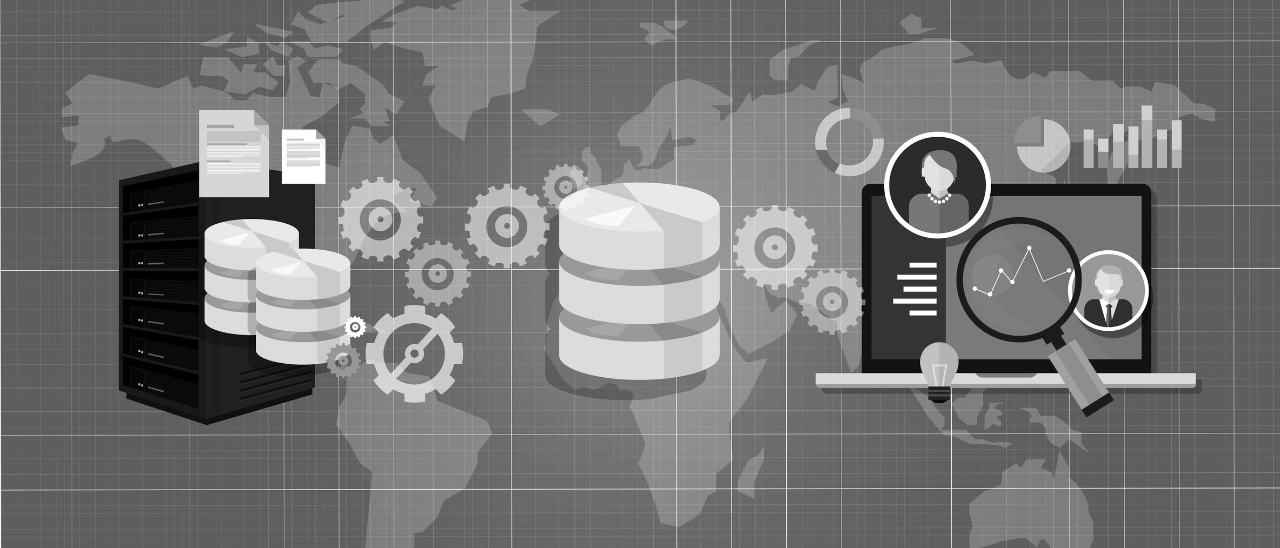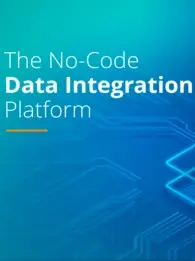
Organizations today collect more data than ever before. From customer transactions and social media interactions to sensor data and financial records, data has become the lifeblood of modern business. However, simply collecting data isn't enough.
Without a proper structure, it can be almost impossible to gain valuable insights and informed decision-making. To unlock its true potential and glean valuable insights, organisations need a well-defined strategy for managing this ever-growing information asset.
This is where data architecture comes into play. This article tells you everything you need to know about data architecture, including what it is, how it works and examples of its components and frameworks.
What is data architecture?
Data architecture is a well-defined set of rules, policies, models, and standards that govern how data is collected, stored, managed, and ultimately used within an organization.
It acts as a roadmap, outlining the entire lifecycle of data – from its initial capture to its final transformation into actionable insights – to ensure everyone is on the same page about how data should be handled throughout its lifecycle, from collection to use.
Data architecture is the backbone of any data-driven organization. An effective data architecture is essential for any organization that wants to get the most out of its data, helping to improve data quality, accessibility, and security while reducing costs and improving decision-making.
By carefully planning and implementing a robust data architecture, businesses can unlock the true potential of their data assets, transforming them from raw information into valuable insights that drive better decision-making, innovation, and overall business success.
Key components of data architecture
A well-defined data architecture is a complex yet organized structure composed of several key components that work together to create a smooth-running data ecosystem.
Here are the key components of data architecture
1. Data Models
Data Models are blueprints that define how data is structured. They specify the data elements (like customer names or product codes), their attributes (details like data type or length), and their relationships. They also specify the different data elements (like customer name, product ID, etc.) and how they relate to each other.
There are three main types of data models within a data architecture:
- Conceptual Data Model. This high-level overview depicts the big picture of what data the system will contain, how it's organized, and the business rules involved. Think of it as a map outlining the major cities and regions.
- Logical Data Model. This provides a more detailed view, specifying data entities (like customers or products), their attributes (characteristics), and the relationships between them. It's like a detailed road map within a region.
- Physical Data Model. This blueprint dives into the specifics of how data is stored in a particular database system, considering factors like data types and storage mechanisms. Imagine this as a detailed street map of a city.
2. Metadata
Metadata is essentially "data about data." It provides context and meaning to your actual data and describes the definition of a data element, its format, its lineage (where it came from and any transformations it underwent), and access restrictions.
Large organizations can accumulate vast amounts of data from various sources. Metadata acts like a cataloguing system, tagging and classifying data elements, making them easier to find and understand. This is especially helpful when searching for specific data sets for analysis.
Metadata also goes beyond just labelling data. It can include details like data definitions (what a particular field means), data types (numbers, text, dates), and even allowed values. This extra information helps users understand how to interpret and utilize the data correctly within your architecture.
3. Data Storage Technologies
Data storage technologies are the workhorses of data architecture. They form the foundation for physically housing your data, acting as the essential infrastructure for all the other components to function.
Data storage solutions are designed to allow authorized users to access the data they need for analysis, reporting, or other purposes. Different storage options cater to varying access needs – some prioritize speed for real-time queries, while others focus on cost-effective long-term archiving.
Here are some common data storage options used in data architectures:
- Relational Databases: Relational databases, also known as SQL databases, are structured databases store data in tables with rows and columns, ideal for well-defined, transactional data that requires frequent querying and manipulation. Examples include customer databases or product catalogs.
- NoSQL Databases: NoSQL databases are a type of database that stores and manages data differently from traditional relational databases.
- NoSQL databases are built to scale horizontally by adding more servers. This makes it easier to handle increasing data volumes compared to relational databases that scale vertically by adding more powerful hardware to a single server, which can become expensive in the long run.
- Data Warehouses: These are massive repositories designed to store historical data from multiple sources, specifically for data analysis. Data warehouses are optimized for complex queries and support data exploration for trends and insights.
- Data Lakes: Centralized repositories for storing all forms of data (structured, unstructured, semi-structured) in their raw format. This allows for broader data exploration and fosters data science initiatives. Data lakes may require additional processing before analysis.
- Cloud Storage: Highly scalable and cost-effective storage offered by cloud providers. Cloud storage offers flexible options for storing various data types and can be a good choice for archiving less frequently accessed data.
The type of data storage you choose significantly impacts the overall design of your data architecture, and factors like data size, access frequency, and cost influence the selection. For instance, a data warehouse optimized for complex analytics might not be the most suitable choice for storing real-time sensor data from IoT devices.

Data storage also needs to integrate seamlessly with other components of your data architecture. Data pipelines should be able to efficiently move data between storage and processing systems. Additionally, data governance policies dictate access controls and security measures implemented within the storage solution.
4. Data Management Tools
Data Management Tools are the software applications that put the data architecture blueprint into action. They automate tasks, enforce policies, and streamline the overall data management process, playing a vital role in making the data architecture function effectively. Some key tools include:
- ETL/ELT Tools (Extract, Transform, Load/Extract, Load, Transform). ETL and ELT tools automate the process of moving data from various sources to a target system, transforming it along the way.
- Data Integration Tools: These tools facilitate the seamless flow of data between diverse sources. They perform data extraction, transformation, and loading (ETL) processes. ETL involves extracting data from various sources, transforming it into a consistent format, and loading it into a target system for analysis or reporting. Data integration tools ensure data consistency and accessibility for further use
- Data Quality Tools. Data quality tools ensure the accuracy and consistency of data throughout its lifecycle.
Selecting the right data management tools depends on your specific data architecture, budget, and data management needs.
5. Data Governance
Data governance is the set of policies, processes, and standards that dictate how an organization manages its data. It's essentially the overarching framework that ensures your data architecture functions effectively and delivers reliable information.
Data governance ensures the data stored within your architecture is accurate, consistent, and complete. This builds trust in the data, leading to more reliable insights and informed decision-making. And by defining clear ownership and access controls, data governance prevents data silos and ensures efficient data usage across the organization.
Read: What is a Data Governance Framework
In essence, data governance acts as the invisible architect behind the scenes of your data architecture. It ensures the technical blueprint translates into a trustworthy and functional system for managing your organization's valuable data assets.
Principles of data architecture
The key principles of data architecture lay the foundation for a strong and adaptable data infrastructure. These principles ensure your data architecture meets the ever-evolving needs of your organization and facilitates data-driven decision-making.
Here are some of the most important ones:
- Business Alignment. The core principle is ensuring your data architecture aligns with your business strategy and goals. The data stored, managed, and accessible through this architecture should directly support business objectives and answer critical questions for stakeholders.
- Data Quality. Accurate, consistent, and complete data is paramount. Data governance practices and data quality checks within pipelines are crucial to ensure the data foundation is reliable and leads to trustworthy insights.
- Scalability and Flexibility. Your data architecture should be adaptable to accommodate future growth in data volume, variety, and user base. Scalable storage solutions and modular designs allow you to adapt to changing needs.
- Security and Access Control. Protecting sensitive data is critical. Data governance defines access controls and security measures within the architecture to prevent unauthorized access and ensure data privacy.
- Shared Data as a Resource. Break down data silos and treat data as a shared organizational asset. This fosters collaboration and ensures everyone has access to the data they need to make informed decisions.
- Standardization. Establish consistent naming conventions, data formats, and definitions across the data architecture. This simplifies data management, reduces errors, and improves data integration.
- Documentation. Maintain clear and up-to-date documentation of your data architecture. This includes data models, data lineage (data flow), and user guides. Proper documentation makes it easier to understand, maintain, and evolve the architecture over time.
- Automation. Automate routine tasks within the data architecture, such as data pipelines and data quality checks. This frees up IT resources for more strategic initiatives and improves overall efficiency.
- Continuous Improvement. The data landscape is constantly evolving. Regularly review and update your data architecture to ensure it remains effective and aligned with your business needs.
Data architecture frameworks
Data architecture frameworks are essentially pre-built roadmaps that guide you in designing, implementing, and managing your organization's data infrastructure. They provide a structured approach to ensure your data architecture aligns with your business goals and delivers valuable insights.
There isn't a one-size-fits-all data framework, and the ideal framework for your business depends on your organization's size, data complexity, and specific requirements.
Here are some common examples:
1. DAMA International's Data Management Body of Knowledge (DAMA-DMBOK2)
DAMA International's Data Management Body of Knowledge (DAMA-DMBOK2) is a comprehensive data architecture framework that serves as a wide-ranging resource for various aspects of data management within an organization. It provides a comprehensive overview of data management, including data governance, data modelling, data storage, and data security.
This broad knowledge base serves as a strong foundation for understanding data architecture principles and their role within the larger data management landscape.
2. Zachman Framework for Enterprise Architecture
The Zachman Framework for Enterprise Architecture is a classification scheme used to organize the descriptive representations (models or blueprints) of an enterprise. It's a way to view and define an enterprise from various perspectives, helping stakeholders understand how the different parts of the business fit together.
The Zachman Framework is a two-dimensional matrix with six columns (What, How, When, Who, Where, Why) and six rows representing different viewpoints within the organization (Planner, Builder, Owner, etc.). This structure provides a high-level overview of the data architecture from various perspectives.
While encompassing the entire enterprise, you can focus on specific data-related aspects within the Zachman Framework. For example, the "What" column might detail data entities (customers, products) and their attributes, while the "How" column could explore data models and data storage solutions.
3. The Open Group Architecture Framework (TOGAF)
The Open Group Architecture Framework (TOGAF) is a widely used approach for designing, implementing, and governing data architecture. Developed and maintained by The Open Group, a vendor-neutral consortium, it's considered the de facto standard for enterprise architecture.
TOGAF provides a high-level methodology that can be adapted to various aspects of enterprise architecture, including data architecture, business processes, applications, and technology infrastructure. TOGAF is a powerful framework that can be leveraged to create a robust and well-aligned data architecture within a broader enterprise architecture. It offers a standardized approach, promotes communication, and helps mitigate risks, making it a valuable tool for organizations of all sizes.
Data architecture best practices
1. Align with Business Goals
This is the golden rule. Ensure your data architecture directly supports your organization's strategic objectives. The data collected, stored, and accessible through this architecture should answer critical business questions and provide insights that drive better decision-making.
2. Focus on Data Quality
Data is the foundation of any data-driven initiative. Implement strong data governance practices and data quality checks throughout your data pipelines to ensure the data is accurate, consistent, and complete. "Garbage in, garbage out" applies to data architecture as well.
3. Embrace Scalability and Flexibility
Your data architecture shouldn't be rigid. Design it to accommodate future growth in data volume (more data), variety (different data types), and user base (more people needing data access). Scalable storage solutions and modular designs allow you to adapt to changing data needs.
4. Prioritize Security and Access Control
Data security is paramount. Data governance should define clear access controls and security measures within the architecture to prevent unauthorized access and ensure data privacy. Data encryption and user authentication are essential components.
5. Break Down Data Silos
Foster a collaborative environment by treating data as a shared organizational resource. Eliminate data silos where departments hoard their data. This ensures everyone has access to the information they need to make informed decisions.
6. Standardization is Key
Establish consistent naming conventions, data formats, and definitions across your data architecture. This simplifies data management, reduces errors, and improves data integration between different systems.
7. Document Everything
Maintain clear and up-to-date documentation of your data architecture. This includes data models, data lineage (how data flows through the system), and user guides. Proper documentation makes it easier to understand, maintain, and evolve the architecture over time.
8. Automate Where Possible
It’s important to automate routine tasks within the data architecture, such as data pipelines and data quality checks. Many data management solutions come with machine learning and automation capabilities built-in, allowing you to free up IT resources for more strategic initiatives and improving overall efficiency.












